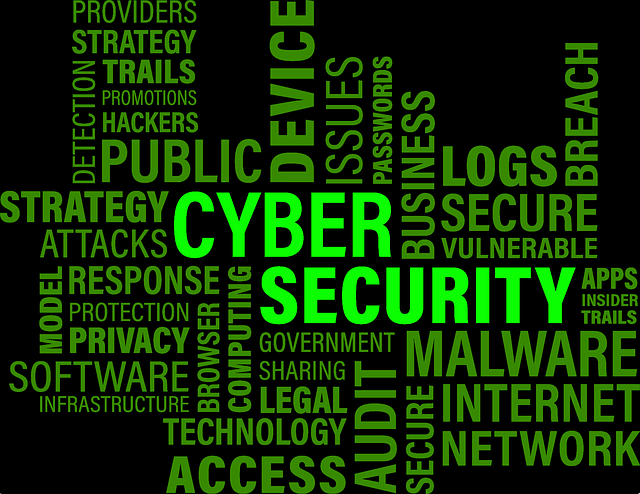Cybercrime is a rising concern for government organizations and small businesses alike. It’s even more of a threat now that Russia invaded Ukraine.
The Cybersecurity and Infrastructure Intelligence Agency issued a warning to all organizations to be on the lookout for cyberattacks.
It’s not just financial institutions and electric grid providers that need to be concerned. Small businesses and other organizations provide the perfect gateway to disrupt parts of the country’s operations.
If there’s ever a time to conduct a cybersecurity audit, it’s now.
As a small business owner, you have a responsibility to protect your customers’ data and your business. You don’t have to be a cybersecurity professional.
Read on and learn how you can conduct an IT audit and secure your systems.
1. Goal of the Cybersecurity Audit
The main goal of a cybersecurity audit is to identify security flaws and vulnerabilities. There are often secondary goals.
A secondary goal can be to ensure employee compliance of IT policies. Another goal is to ensure company-wide compliances with regulatory standards.
2. Plan the Audit
Define the scope of the cybersecurity audit. Most audits cover different areas, such as data security, device security, and operational security.
You may want to have an external cybersecurity audit as opposed to an internal one. An external audit means that you hire a cybersecurity professional to review your systems.
There are advantages to working with an outside firm. The first is that they have tools and software to perform penetration tests.
They’re trained to know how to spot vulnerabilities and the latest threats. A cybersecurity professional brings an outside perspective and they’ll see things that you might overlook.
No matter what you decide, it’s important to get everyone on board with the audit, from the management team down.
3. Review Compliance Standards
Your business has to comply with at least one type of security standard. If you’re a healthcare organization, you need to comply with HIPAA.
Do you do business with the U.S. government? Then you’ll need to comply with the NIST framework.
For businesses that attract customers from Europe, you’ll need to read up on GDPR policy for Small Businesses.
The more you know about compliance standards, the easier it is to identify compliance issues during the audit. This can help you get into compliance quickly and avoid fines from agencies that enforce these policies.
4. Review Current IT Policies
What are the current policies of the IT department? If you don’t have anything documented, then that becomes part of the company’s vulnerabilities.
IT policies are documents for the IT department and the entire organization. A general policy for employees defines the rules around information processing, device handling, and anything related to the IT network.
The IT department’s policies define access controls, the acceptable use policy, maintenance plans, and backup policies.
The most important part is the IT department’s cybersecurity plan. This enables the team to detect, prevent, and respond to cyberattacks.
Having a plan that covers all aspects of cybersecurity enables your company to recover faster.
5. Review and Record Vulnerabilities
This is the part where the auditing team reviews every aspect of your systems to look for security issues.
They can interview employees and managers. This isn’t to intimidate employees, but to learn how devices get used and information gets accessed.
They’ll review business processes, technologies used, and compliance laws to see if there are security issues. The auditing team notes them for the next step in the cybersecurity audit.
6. Create a Risk Response List
There are a couple of things to ask yourself at this stage. Which vulnerabilities are the most important? Can you fix them?
When you prioritize your list, look at the likelihood of an event occurring and the cost of the event to your organization.
Take the most important security flaws and evaluate whether or not you can secure them. If not, then you should get the services of a cybersecurity professional to assist.
7. Train Employees
Employees are often cited as the cause of a cyberattack.
About 56% of IT professionals believe that employees reverted to bad cybersecurity practices while working remotely.
Nearly 40% of employees admit that they don’t use strong security protocols at home as they do in the office.
Going through an audit and securing your systems is only part of the job. Training your employees is the other part of the job.
Training should teach employees how to spot suspicious emails and other activities. They should also learn how to handle mobile devices and connect personal devices to the organization’s network.
8. Revisit and Revise Your Plans
Doing a cybersecurity audit one time is a step in the right direction. However, cyber security needs and risks change often.
A single cybersecurity audit isn’t going to cut it. You have to make cybersecurity part of your organization’s culture.
Every several months, take the time to review your policies and plans. Conduct IT audits on a regular basis.
You’ll stay on top of cybersecurity and ahead of all threats to your business.
Now Is the Time to Conduct a Cybersecurity Audit
Thanks to world events, the time to conduct a cybersecurity audit is now. You simply can’t afford to wait and get hit by a massive cyberattack.
State-backed hackers are banking on organizations like yours to be unaware of the threat or to minimize it. Stay ahead of the criminals and do an IT audit right away.
Follow the steps laid out in this guide, and you’ll be on your way to securing your network and your business.
Remember that a cybersecurity audit isn’t a one-time thing. Cybersecurity with continued vigilance.
For more helpful technology tips and insights, be sure to check out the other articles on the blog today!

